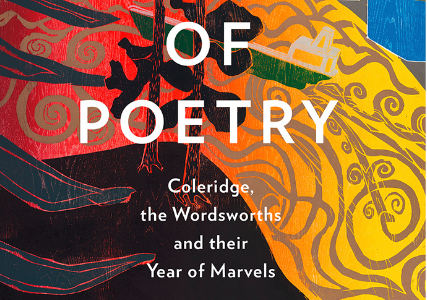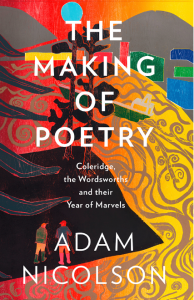
World of Romantics

Wordsworth and his sister Dorothy lived in Somerset neighbours to Coleridge and his young wife Sara Fricker in 1797. The four never formed a quartet of equal minds.
Adam Nicolson demonstrates what Coleridge had actually written in this spellbinding recreation of the making of Romantic poetry amid the Somerset Quantock Hills – was that “tho’ we three persons, it was but one God”. That God – a broken man when the younger poet first met him, guilt-ridden about the mistress and child he had callously abandoned in revolutionary France, creatively blocked and reluctant to lift his stare from the ground beneath his feet – was William Wordsworth.
IN June 1797, Coleridge, bounding along the cart track from his own damp little cottage to welcome a keenly anticipated neighbour to the Quantocks, is carrying with him the key to Wordsworth’s salvation. This was the year in which Coleridge, persuaded Wordsworth to emerge from his dark interior world and discover a boldly simple language for fresh startlingly original poetry.
The poetry they made was not from settled conclusions but from the adventure on which they were all embarked seeing what they wrote as a way of stripping away all the dead matter, exfoliating consciousness devling into deeply.
Lyrical Ballads first published anonymously in 1798, demonstrated Coleridge’s success as a saviour. Nineteen poems included “ Tintern Abbey” and “ The idiot Boy” – revealed Wordsworth’s sudden flowering just four were by Coleridge whose “ Rime of the Ancient Mariner” opened the collection. Kubla Khan written in 1797, would remain unpublished for another 18 years and Nicolson suggests that Coleridge’s great poem might have been dedicated to a certain William Wordsworth “Khan”, a gentlemanly neighbour whose embroidered silk waistcoats were disconcertingly dandified. Nicolson stalks his prey with the passion of David Attenborough in pursuit of vanishing species.
The Making of Poetry: Coleridge, the Wordsworth and their year of Marvels by Adam Nicolson, illustrated by Tom Hammick, William Collins £25, 390 pages.
